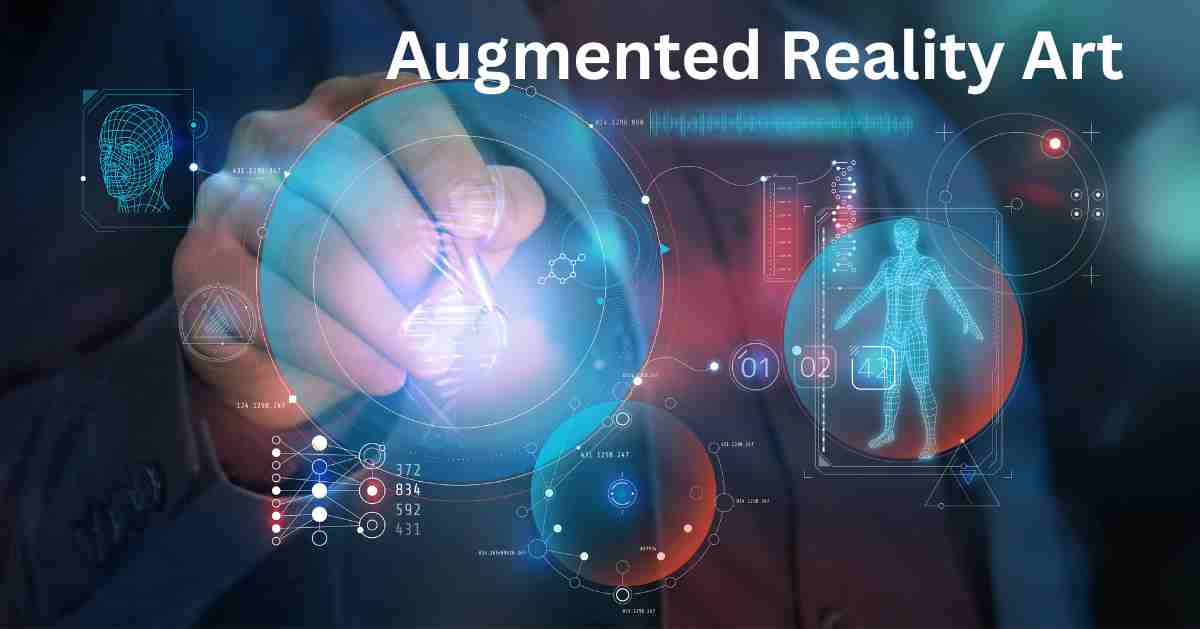Augmented Reality Art: Blending Creativity with Cutting-edge Technology

In the dynamic landscape of art and technology, a new medium is emerging that not only blurs the lines between the physical and digital world but also redefines the very canvas upon which artists create. Augmented Reality, or AR, is at the forefront of this creative revolution, offering a platform for artists to tell stories, evoke emotions, and engage audiences like never before.
In this extensive exploration of augmented reality art, we’ll guide you through the burgeoning AR art scene, uncover how it’s transforming traditional art practices, and discuss the implications for the future of the art world. This blog post is not just for art enthusiasts; it’s for anyone interested in the intersection of creativity and technology.
The Spark of Imagination: What is AR Art?
AR art is a digital experience that augments the real world through a device, such as a smartphone or tablet. By viewing the physical environment through a screen, users can witness digital art pieces superimposed on the world around them. This immersive technology allows artwork to come to life, change perspective, and interact with the audience, all in real-time and often in real spaces.
The Birth of a New Genre
While the concept of digital art is not new, the fusion of digital media with the physical environment brings a fresh direction to the artistic realm. Augmented Reality art has become a genre within itself, with artists specializing in creating pieces that harness the power of technology to enhance the viewer’s experience.
Breaking the Fourth Wall
One of the most captivating aspects of AR art is its ability to break the traditional viewing barriers of art. The fourth wall between the viewer and the artwork is shattered, as creations now leap from their canvas, expand into their surroundings, and invite the audience to co-create the experience.
The Canvas of Reality: Where AR Art Happens
AR art can manifest in various locations, each providing a unique context and set of challenges for artists to consider. From galleries to public spaces and even at the comfort of one’s home, the canvas of AR art is as vast as the world itself.
Galleries and Museums
Art galleries and museums have been at the forefront of adopting Augmented Reality technology to enhance exhibitions. By layering AR experiences on top of physical art pieces, these institutions are creating multi-sensory exhibitions that engage viewers in new and exciting ways.
The Streets as a Stage
Public spaces provide a larger-than-life canvas for AR art to make a statement. Artists can use AR to add a layer of narrative to urban landscapes, cultivate community engagement, and breathe new life into often overlooked elements of city life.
Virtual Homes, Real Art
With the rise of AR-capable devices, art can now be a part of the everyday home environment. Whether it’s a virtual gallery of famous paintings on your living room wall or a bespoke AR experience tailored to your space, the home becomes a sanctuary for personal, interactive art experiences.
The Palette of Possibilities: AR Tools for Creation
Artists today have at their disposal a variety of AR creation tools that make the process of augmenting reality both accessible and intuitive. These tools empower artists to prototype, design, and publish AR art experiences without the need for extensive coding knowledge.
Apps for Art
From the user-friendly interfaces of apps like Adobe Aero and Artivive to more specialized tools like 8th Wall and Unity MARS, there’s a AR creation platform for every level of expertise. These apps provide a range of features, such as 3D modeling, animation, and interaction design, that allow artists to bring their visions to life in AR.
The Importance of Community
AR art is not just about the tools; it’s also about the community that surrounds it. Online forums, social media groups, and dedicated AR art platforms serve as hubs for artists to share their work, collaborate, and learn from each other, fostering a vibrant ecosystem of digital creators.
The Master’s Touch: examples of AR in the Art World
To truly understand the impact of AR in the art world, we need look no further than the works of pioneering artists who have embraced this technology and used it to push the boundaries of what is possible within the realm of art.
Art that Responds to the World
Some of the most compelling AR art pieces are those that respond to their environment or the viewer’s actions. For instance, an AR sculpture may change form as people move around it, or a mural might ‘come to life’ and tell a story that relates to the history of its urban setting.
AR as a Portal to New Realities
Immersive AR experiences can transport viewers to entirely new worlds. Artists create portals that, when viewed through a device, reveal fantastical landscapes, interactive narratives, and awe-inspiring spectacles that can only exist in the realm of augmented reality.
The Business of AR Art: Monetizing Digital Creations
While the value of AR art has been widely recognized, the question of how to monetize digital creations remains a focal point for both artists and the industry at large.
NFTs: The New Frontier
The rise of Non-Fungible Tokens (NFTs) has provided a digital ownership model that is revolutionizing the way art is bought and sold. AR artists are beginning to adopt NFTs as a way to establish ownership and sell their digital pieces in the cryptocurrency market.
Partnerships and Commissions
Collaborating with brands, events, and other artists on AR projects can be a lucrative endeavor for AR artists. These partnerships often lead to high-profile commissions, sponsorships, and access to resources that help artists bring their visions to a broader audience.
The Educational ARtSpace: Teaching and Learning in AR
Education and AR are a natural fit, with AR technology offering new and exciting ways for students to engage with art and learn about its history and techniques.
bringing Art to Life in the Classroom
AR in the classroom can transform static textbooks into dynamic educational experiences. By overlaying digital content onto printed art, students can see works in progress, historical context, and even step inside virtual recreations of famous galleries and their holdings.
AR as a Tool for Self-directed Learning
For aspiring artists, AR tools offer a way to experiment with their creative ideas in a low-pressure environment. By creating and experiencing art in AR, students can accelerate their learning and develop a unique voice in the art world.
The Future is Here, and it’s ARtistic
The future of AR art is filled with endless possibilities. As the technology continues to advance, we can anticipate even more groundbreaking art experiences that merge the physical and the digital in ways that challenge, inspire, and delight audiences worldwide.
Through this deep-dive into augmented reality art, we hope to have piqued your curiosity and ignited your imagination about the role of technology in the art universe. We are witnessing a monumental shift in how we perceive and create art, and it’s an exciting time to be both an artist and an art lover.
Art is evolving, and AR is at the vanguard of this evolution. Whether you’re an artist looking to expand your creative palette, a collector on the hunt for the next big thing, or an enthusiast eager to experience the future of visual storytelling, AR offers a world of wonders waiting to be explored. Keep your eyes (and smartphones) peeled – the next masterpiece may be just a tap away.
Say goodbye to complex coding and hello to seamless No code Augmented Reality Platform. Try PlugXR now and see how easy it is to transform your art into immersive AR experiences.






